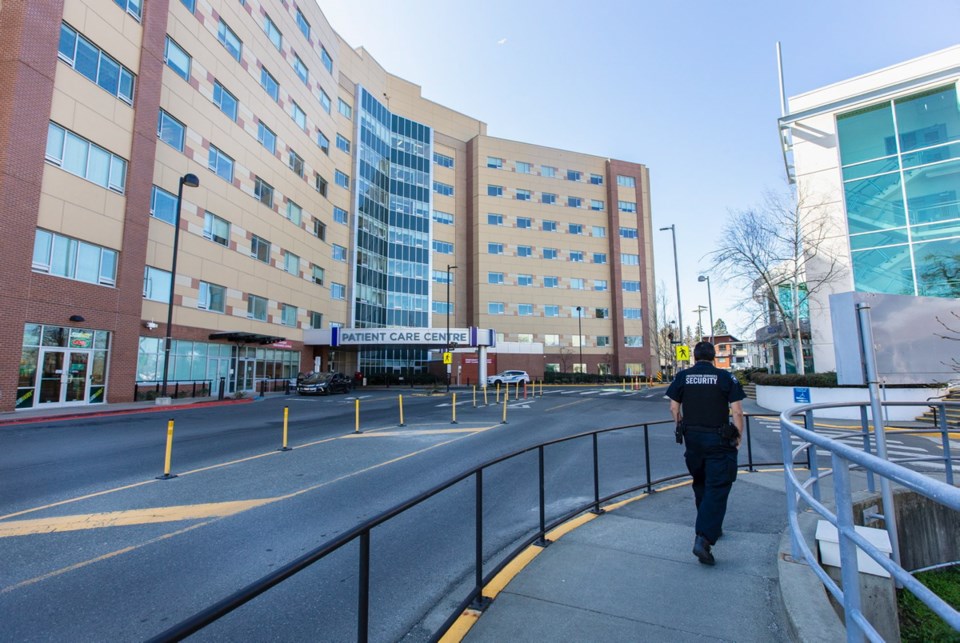British Columbia’s health-care system would have to stretch to the snapping point if the COVID-19 outbreak turns into a northern Italy style catastrophe. But briefings Friday on the planning to brace for the worst-case scenario suggest the system could handle it.
It would bend completely out of shape compared to normal times. It already has, with the emptying of 3,900 hospital beds. But it wouldn’t necessarily break.
The modelling was based on using the experience of three countries, notably the northern Italy disaster. Numbers and rates were transposed to B.C., particularly the number of hospitalizations.
But officials stressed the model isn’t an expectation of what will happen. It’s an estimate of what would be needed if it did happen.
And the prospect of the worst-case scenario coming to pass in B.C. was downplayed for a number of reasons.
One is that B.C. is a few weeks behind Italy and has had the time to learn from the shortcomings there. The virus exploded there so rapidly there was little time to empty the hospitals and brace for the onslaught.
B.C. has cancelled elective surgeries and reduced the hospital occupancy rate from the usual 100% to about two-thirds. That creates surge capacity for what might come.
The other reason to downplay the worst-case is the slight bit of encouragement in B.C.’s virus rate.
The health ministry briefings said the growth rate of COVID-19 cases in B.C. has been positively impacted by the severe health measures put in place over the past few weeks.
The trajectory changed from a 24% average daily increase to 12% this week.
A change in the testing strategy to concentrate where the highest risk is contributes to the drop, as does the closed border that stopped new cases from elsewhere coming to B.C.
But the hope is that social distancing is contributing to slowing the spread.
“We are maybe starting to bend a little bit here,” said Dr. Bonnie Henry, B.C.’s public health officer.
A hypothetical model of the caseload had social distancing not been mandated puts the number of cases today far higher than it actually is.
It stands at 792 as of Friday.
The next few weeks will establish more clearly which trend line B.C. will follow. The drastic social distancing measures started getting imposed March 13 and it took several days for people to comprehend them.
The virus has a 14-day incubation period. So what the daily count does in the next few days will confirm the first wave of restrictions are having effect.
Comparing around the world, B.C. and Canada are currently closer to the South Korea experience than the much more severe situations in northern Italy and China’s Hubei province.
Nonetheless, planning extends to the Italian scenario, which means B.C.’s system is bracing for an onslaught.
The 17 biggest hospitals in B.C. — Nanaimo General and Royal Jubilee on Vancouver Island — are designated to treat primarily COVID-19 patients.
Officials said the principle is to keep patients and care teams together, to keep the risk of transmission confined.
Children with the virus who need ICU (expected to be very few) would go to B.C. Children’s in Vancouver.
Other hospitals would be used as need arises. Planning for less acute patients involves using off-site capacity — other public facilities — if need be.
In the worst-case, Health Minister Adrian Dix said B.C. “would have to use all sites to meet bed demand and implement increased transportation of patients between sites.”
It’s all based on the assumption based on current rates that 14% of patients with the virus will need hospitalization for two to seven days, and 4.7% will need critical care.
There are 73 currently hospitalized. Which explains the urgency of the repeated social distance warnings, the duration of which Henry is referring to in months.
“I never ever thought that I would have to do those types of things,” she said. “But right now this is what we need to do.”



